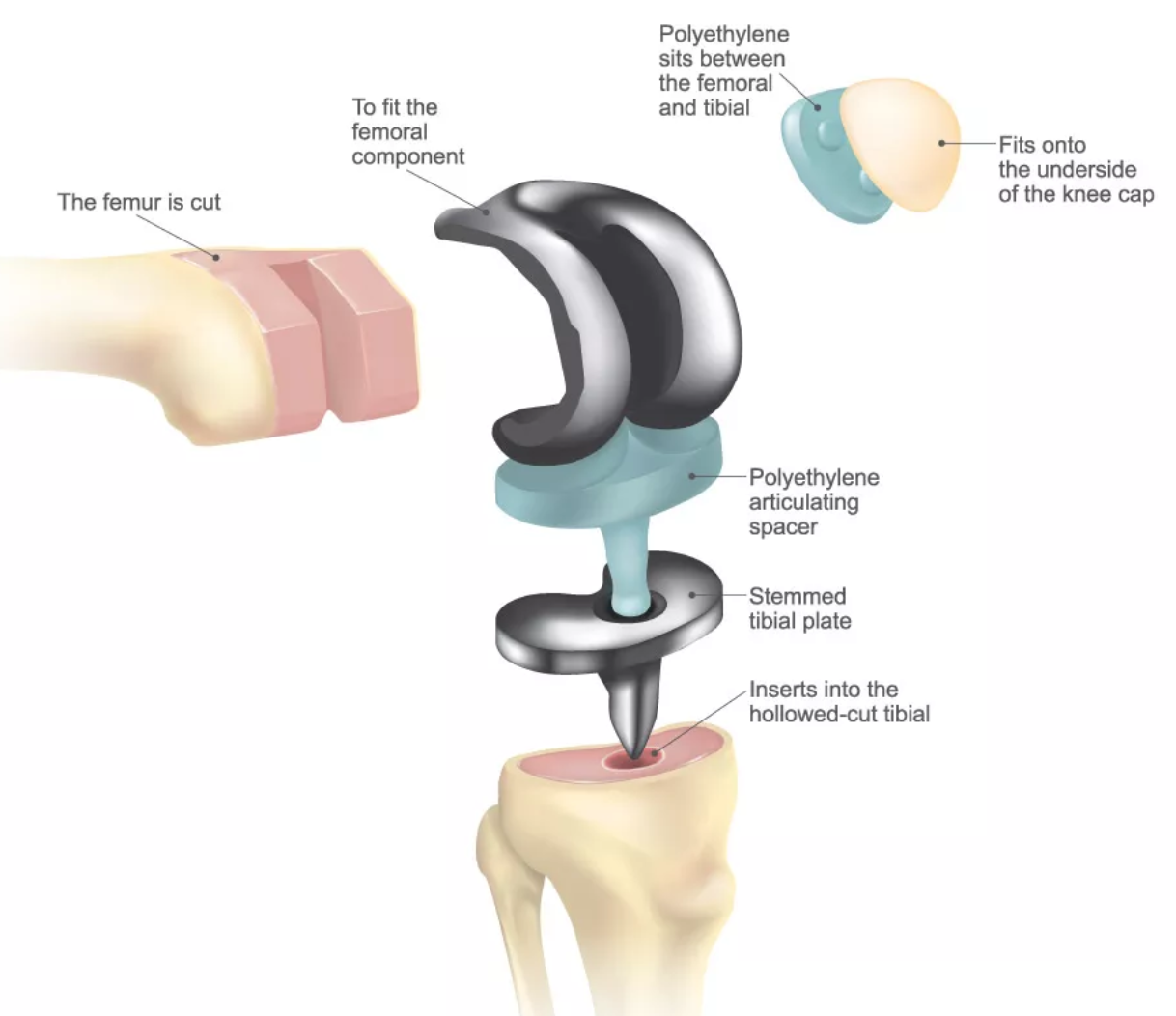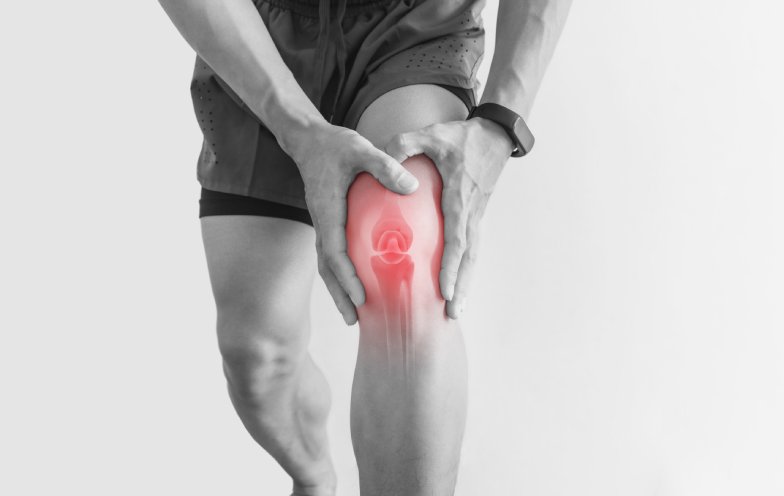Knee Replacement Surgery in Austin, TX – Dr. Sean Gallagher, ATX Orthopedics
If you’re experiencing chronic knee pain, stiffness, or difficulty walking due to severe arthritis, injury, or joint degeneration, knee replacement surgery may be the best solution to restore mobility and relieve pain. At ATX Orthopedics, Dr. Sean Gallagher specializes in total knee replacement (TKR) to help patients regain strength, improve range of motion, and return to an active lifestyle.
Using advanced techniques and state-of-the-art prosthetic implants, Dr. Gallagher provides personalized care and surgical solutions for patients throughout Austin, TX. Whether due to osteoarthritis, rheumatoid arthritis, post-traumatic arthritis, or other degenerative conditions, knee replacement surgery offers long-term relief and improved function. Patients can expect compassionate care, minimally invasive options, and a comprehensive recovery plan tailored to their needs.
What is Knee Replacement Surgery?
Knee replacement surgery, also known as total knee arthroplasty (TKA), is a procedure that involves removing damaged cartilage and bone from the knee joint and replacing them with artificial implants made of metal, ceramic, or durable plastic components. The prosthetic joint mimics the function of a healthy knee, allowing for smoother movement, reduced pain, and improved stability.
There are two primary types of knee replacement procedures:
- Total knee replacement (TKR): Involves replacing the entire joint.
- Partial knee replacement (PKR): Only replaces the damaged knee portion.
The Knee Replacement Procedure
- The patient is placed under either general anesthesia or spinal/epidural anesthesia.
- Dr. Gallagher makes an incision on the front surface of the knee, typically 8-12 inches in length.
- The damaged bone and cartilage are removed from the femur, tibia, and patella.
- The surfaces of the bones are then shaped to accommodate the prosthetic components.
- The artificial joint is secured using medical-grade cement or a special porous coating.
- Muscles and ligaments are repositioned to support and stabilize the new joint.
Who Needs Knee Replacement Surgery?
Knee replacement surgery is recommended for patients who experience chronic knee pain, stiffness, and limited mobility that does not respond to other treatments, such as medications, physical therapy, or injections.
Common conditions that may require knee replacement include:
- Osteoarthritis: Wear-and-tear damage to the joint cartilage over time.
- Rheumatoid Arthritis: An autoimmune condition causing chronic joint inflammation.
- Post-Traumatic Arthritis: Arthritis that develops after a serious knee injury.
- Severe Knee Injuries: Including fractures or ligament tears that affect joint function.
Typical candidates for knee replacement:
- Over the age of 50 with advanced arthritis or joint degeneration.
- Younger patients with severe joint damage or injuries may also benefit.
Benefits of Knee Replacement Surgery
- Pain Relief: Alleviates chronic pain caused by arthritis or joint damage.
- Improved Mobility: Restores range of motion and enables daily activities.
- Enhanced Quality of Life: Patients can engage in non-strenuous activities like walking, biking, and swimming.
- Long-Lasting Results: Modern knee implants are designed to last 15-20 years or more.
What to Expect After Knee Replacement Surgery
Day 0-1: Immediate Post-Surgery Recovery
- Rehydrate with water and electrolyte drinks.
- Some patients may experience rebound pain as spinal anesthesia wears off.
- Narcotic pain medication is optional but should be avoided if side effects occur.
- Patients start a multi-drug pain protocol for effective discomfort management.
- Occasionally, foot drop may occur from the nerve block but typically resolves within 24 hours.
Home Exercise Program: First 2 Weeks
- Focus on range of motion and swelling management.
- Every hour while awake:
- 40 minutes of icing and elevation (toes above the nose).
- 10 ankle pumps per hour.
- 10 knee extension and flexion exercises per hour.
- 10 steps per hour using a walker.
Weeks 2-6: Building Mobility and Strength
- Day 7: Remove surgical dressing and leave the incision open to air.
- Steri-Strips will naturally fall off or can be removed after two weeks.
- Continue icing and elevating the knee three times daily.
- Transition from walker to cane between days 7-14, depending on progress.
Step count progression:
- Week 2: 1,200 steps/day
- Week 3: 2,000 steps/day
- Week 4: 2,750 steps/day
- Week 5: 3,500 steps/day
- Week 6: 4,500 steps/day
Physical Therapy Options
- Home Exercise Program (HEP): Self-directed recovery with structured exercises.
- Outpatient PT (OPPT): Guided rehabilitation available for those who prefer assistance.
Week 12 and Beyond: Full Recovery
At 12 weeks post-op, patients can gradually return to activities such as hiking, biking, golf, and light sports. There are typically no long-term restrictions, but high-impact activities should be avoided until confidence in joint stability is restored.
FAQs About Knee Replacement Surgery
Q: How long does knee replacement surgery take?
A: The procedure typically lasts 1.5 to 2 hours, with an additional recovery period in the post-anesthesia care unit (PACU).
Q: When can I walk after knee replacement surgery?
A: Patients typically begin walking with the assistance of a walker within 24 hours of surgery. Gradual weight-bearing is encouraged.
Q: How long is the recovery period for knee replacement?
A: Most patients achieve initial recovery within 6-12 weeks, but full recovery and a return to unrestricted activities typically take 3-6 months.
Schedule Your Knee Replacement Consultation in Austin
Dr. Sean Gallagher and the team at ATX Orthopedics specialize in advanced knee replacement surgery to help patients regain mobility and improve their quality of life. Whether considering surgery for the first time or seeking a second opinion, our practice provides expert guidance and care.


